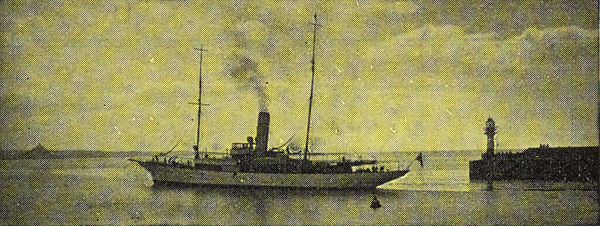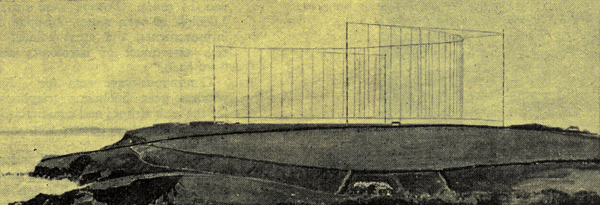|

A floating laboratory - Marconi's yacht Elettra
This was the year of the 'wavelength revolution', a distinct landmark of the half-century. Marconi exploded his 'beam wireless bomb-shell' by disclosing how, in the spring of 1923, he had conducted short-wave receiving tests on 93m while cruising in his yacht Elettra in the South Atlantic.

The parabolic aerial reflector at Poldhu used in early short-wave beam experiments
The transmitting station was at Poldhu, where Franklin had erected a parabolic reflector array. The British Government hastily revised their scheme of expensive mile-wavelength stations for Imperial communications and the Marconi Company undertook a contract to erect beam transmitters on a strict 'no play, no pay' basis. That was probably one of the boldest commercial enterprises ever undertaken; nothing was known about short-wave propagation theory and the phased multiple 'grid' aerials which were to replace the parabolic reflector system existed only on the drawing board. But fortune had favoured the brave; we now know 1923 was a sunspot minimum year; the frequencies chosen for the early experiments, though on the low side, were not so low as to be unworkable; on the other hand, they were not so nearly correct for prevailing conditions as to give an over-optimistic impression of the potentialities of short waves.
Short-wave working had by now become widespread, particularly among amateurs, and SW broadcasting had started in America. Other highlights of the year: Campbell Swinton's detailed pronouncement on the possibilities of cathode-ray television and Baird's first article on his mechanical system.
|